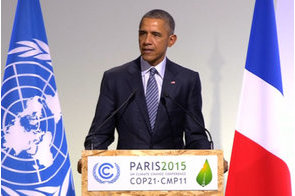Elon Musk unveils details of $100mn global carbon reduction competition

Summary
We want teams that will build real systems that can make a measurable impact and scale to a gigaton level -- Musk.
Elon Musk, inventor and CEO of Tesla, Inc., disclosed on Monday the details of the XPRIZE Carbon Removal competition, which he first announced last month to crowdsource tech innovations to tackle climate change.
The competition will be organised by XPRIZE, a non-profit organisation, and take place over a four-year period. The $100 million prize purse is the largest of any incentive prize ever awarded, according to a statement by the California-based XPRIZE. It will be funded by Musk and the Musk Foundation.
The objective of the competition is to catalyse innovative solutions that can permanently remove carbon dioxide (CO2), a greenhouse gas (GHG), from the atmosphere to limit the rise in global average temperatures. Eligible solutions will be scientifically evaluated based on the amount of CO2 removed, life cycle analysis of the removal process, energy efficiency, land footprint and sequestration capabilities.
“This is not a theoretical competition; we want teams that will build real systems that can make a measurable impact and scale to a gigaton level,” Musk, who became the world's richest man early last month, said in a statement on Monday.
Recently released data by the United States National Aeronautics and Space Administration (NASA) shows last year's global average temperature was 1.02 degrees Celsius (°C) or 1.84 degrees Fahrenheit (°F). 2020 tied with 2016 as the warmest year on record. Experts have said limiting global temperature rises to 1.5°C above pre-industrial levels by the end of this century is imperative to reduce the devastating effects of global warming.
Standard strategies for limiting warming include slashing carbon emissions. However, leading scientists have said to avoid the worst effects of climate change, the world must go beyond cutting emissions to removing as much as 6 gigatons of CO2 per year by 2030, and 10 gigatons per year by 2050.
Successful projects in the XPRIZE Carbon Removal competition must be able to remove at least 1 ton of CO2 per day. The competition aims to help scale efficient solutions that can collectively remove 10 gigaton of CO2 per year by 2050.
The competition will officially begin on April 22, 2021, coinciding with Earth Day – an annual commemoration of global efforts to protect the environment. Full guidelines for the competition will be announced on the same day. The competition will last for four years through Earth Day 2025, XPRIZE said.
Eighteen months into the competition, the top 15 teams will receive $1 million each, while 25 student teams will receive $200,000 scholarships each. At the close of the competition, the grand prize winner will receive $50 million. The first runner-up will get $20 million and $10 million will go to the second runner-up.
"To win the competition, teams must demonstrate a rigorous, validated scale model of their carbon removal solution, and further must demonstrate to a team of judges the ability of their solution to economically scale to gigaton levels," according to XPRIZE.
Related
-
Gates Foundation commits $1.4 billion to climate adaptation at COP27
The $1.4 billion will, amongst other investments, support the Africa Adaptation Initiative (AAI) to quickly build a ...
-
Friends of the Earth says United States undermines ambitious and just climate deal
...says the Paris Climate Agreement is not a fair, just or science-based deal.
-
UK aid reduces 16 million tonnes of greenhouse gases
UK aid-supported climate projects have provided 26 million people with improved access to clean energy in the last eight ...









